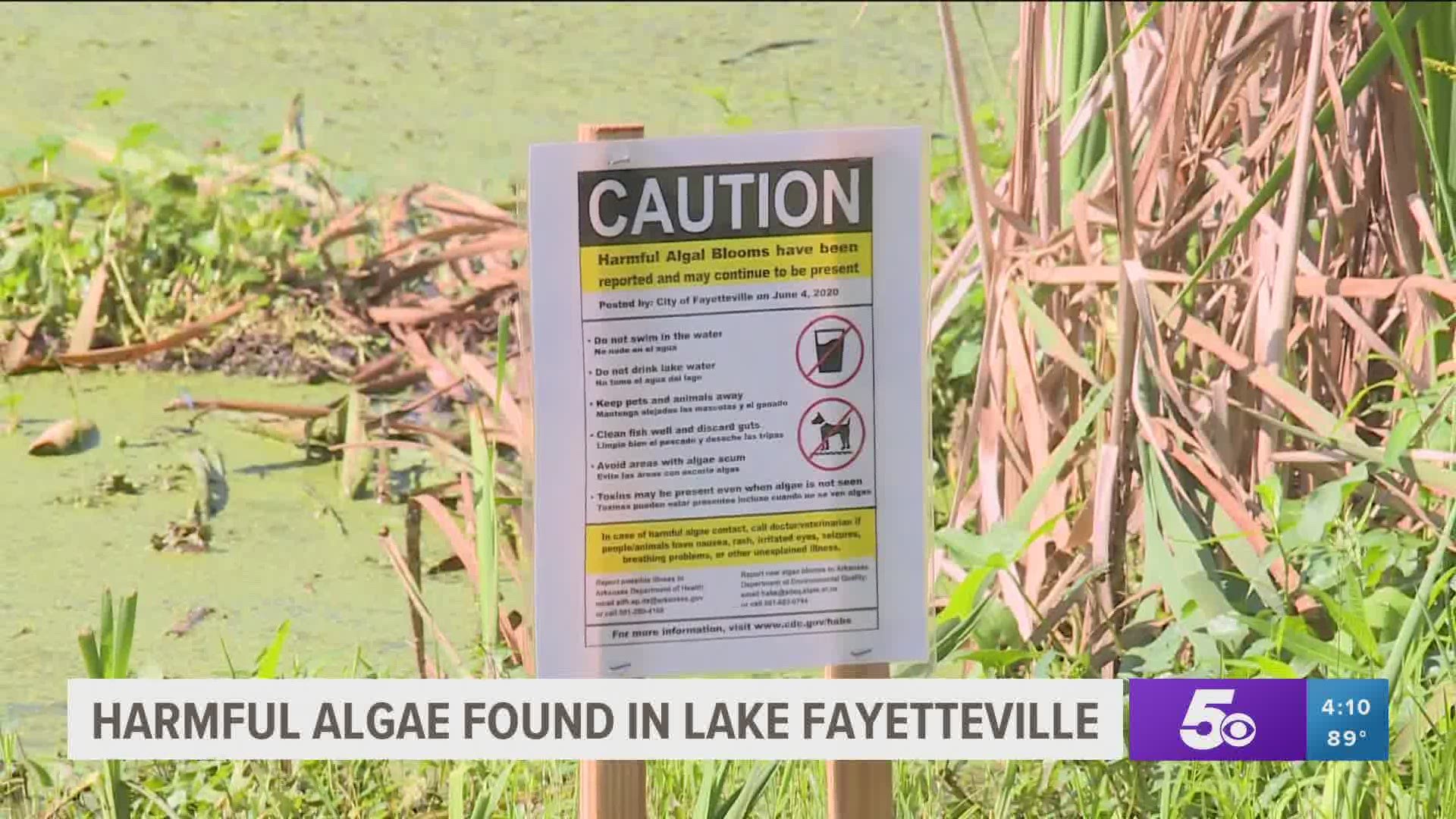FAYETTEVILLE, Ark — A harmful algal bloom was reported on Lake Fayetteville on June 3, 2020.
The water sample taken from Lake Fayetteville by the Arkansas Department of Environmental Quality (ADEQ) showed 30 parts per billion (ppb) of microcystin in the algae scum layer on a portion of the surface of Lake Fayetteville.
This level requires public notification and signage at the location. The City of Fayetteville Parks and Recreation Department has been working with the Arkansas Water Resource Center (AWRC) at the University of Arkansas to monitor algal toxins in Lake Fayetteville over the last two years.
The AWRC has been testing the lake weekly and the toxin levels are highly variable at Lake Fayetteville. The majority of test results have been under the recommended threshold for recreational contact (8 ppb).
However, visual inspection has indicated an algal bloom and recent test results have shown elevated toxins could exist in the algae scum layer.
The AWRC will continue to monitor the water quality of the lake and the City will make recommendations, in conjunction with ADEQ and AWRC, for public use.
Until further notice, caution should be used and activities that involve water contact should be avoided, especially in areas with algal scum, at the lake.
City Parks and Recreation staff have placed signage near the lake suggesting park users should avoid contact with the water.
Park users should also take caution with their dogs and not allow them to swim in or drink the water.
The dead, dry algae near the water edge should also be avoided because it could contain algal toxins.
Microcycstin is an algal toxin produced by some algal types when present in a large group (called a “bloom”) under certain environmental conditions.
Rain and the resulting stormwater washes sediment and dissolved nutrients into waterways, including nitrogen and phosphorous. Bodies of water with a high nutrient content—combined with warm temperatures—encourage rapid growth of algae, possibly creating a harmful algae bloom (HAB).
Exposure to HAB toxins occurs through skin contact, inhalation, and ingestion.
Human and animal illnesses and symptoms can vary depending on how they were exposed, how long they were exposed, and which HAB toxin was involved.
If there is contact with the algae or water, it should be washed off immediately.
Individuals should be cautious and watch for reaction symptoms. Contact a doctor or veterinarian if people or animals have nausea, rash, irritated eyes, seizures, breathing problems or other unexplained illness.
Report possible illness to the Arkansas Department of Health by email adh.ep.its@arkansas.gov or call 501-280-4168.

